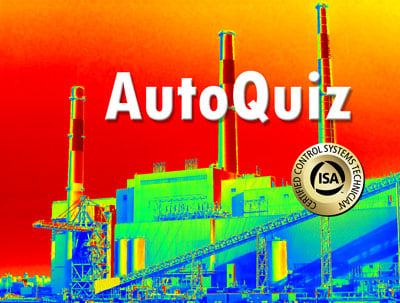AutoQuiz is edited by Joel Don, ISA's social media community manager.
Today's automation industry quiz questions come from the ISA Certified Control Systems Technician (CCST) program. Certified Control System Technicians calibrate, document, troubleshoot, and repair/replace instrumentation for systems that measure and control level, temperature, pressure,  flow, and other process variables. Click this link for information about the CCST program. These questions are from the Level I study guide, Domain 2, Loop Checking. Level l represents a professional who has a 5-year total of education, training, and/or experience.
flow, and other process variables. Click this link for information about the CCST program. These questions are from the Level I study guide, Domain 2, Loop Checking. Level l represents a professional who has a 5-year total of education, training, and/or experience.
1. If heat is produced by a reaction, the process is:
a) endothermic
b) continuous
c) intermittent
d) exothermic
e) none of the above
2. If heat input is required to produce a reaction, the process is:
a) endothermic
b) continuous
c) intermittent
d) exothermic
e) none of the above
These two questions are asking about chemical reactions that are part of a process. An endothermic reaction is one that absorbs heat from its surroundings. An exothermic reaction occurs with the evolution of heat that transfers into the surroundings.
An example of an endothermic reaction is the decomposition of liquid water into hydrogen and oxygen gas.
H2O (l) + heat → H2 (g) + ½O2 (g)
This intuitively makes sense too, as one must add heat to make steam (g) from water (l).
A typical exothermic reaction is gasoline burning. Upon ignition, it burns spontaneously in oxygen to give CO2 and H2O.
2 C8H18 (gaseous octane) + 25 O2 (g) → 16 CO2 (g) + 18 H2 O (g) + heat
The answer to question #1 is D; the answer to question #2 is A.




